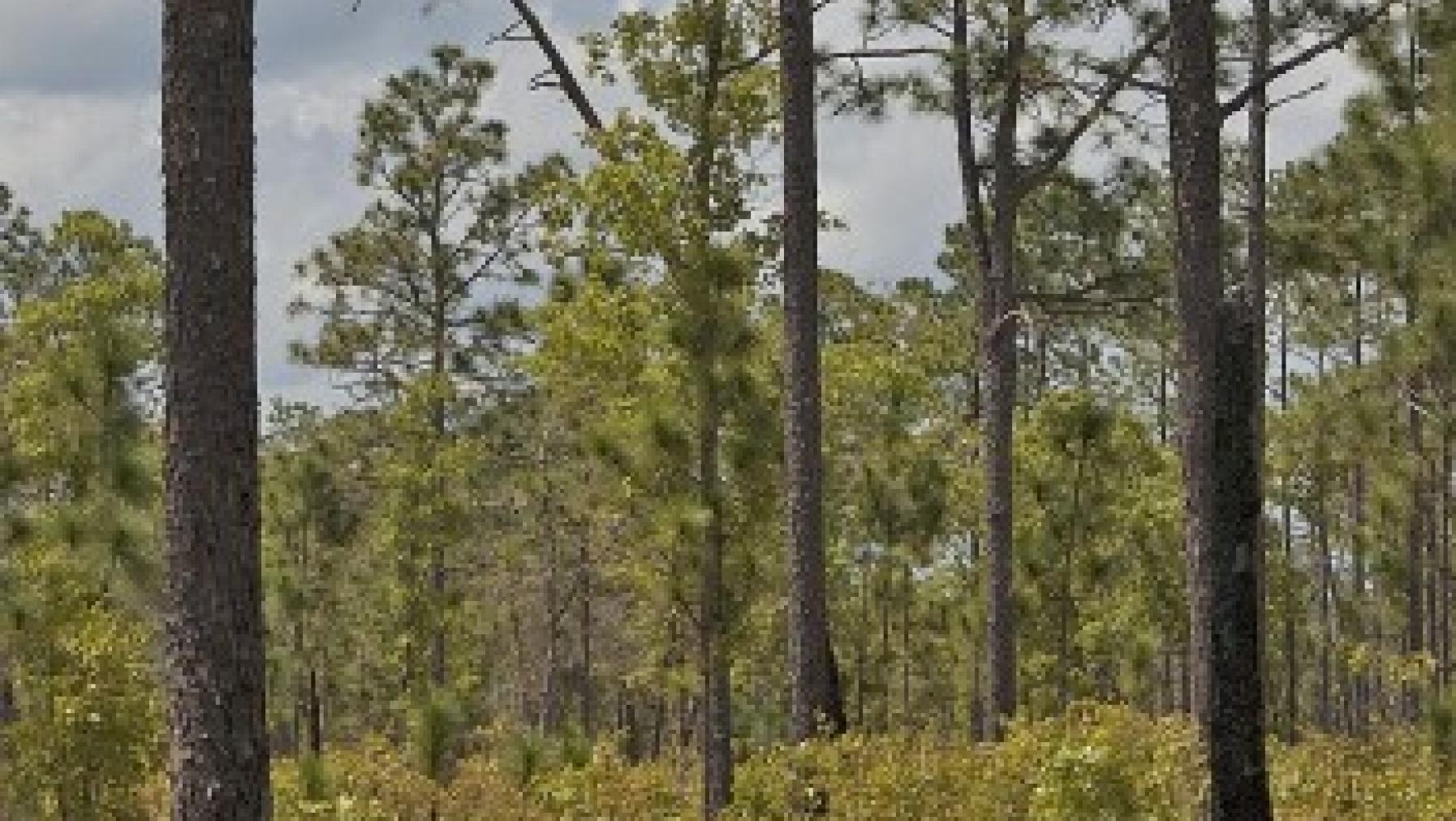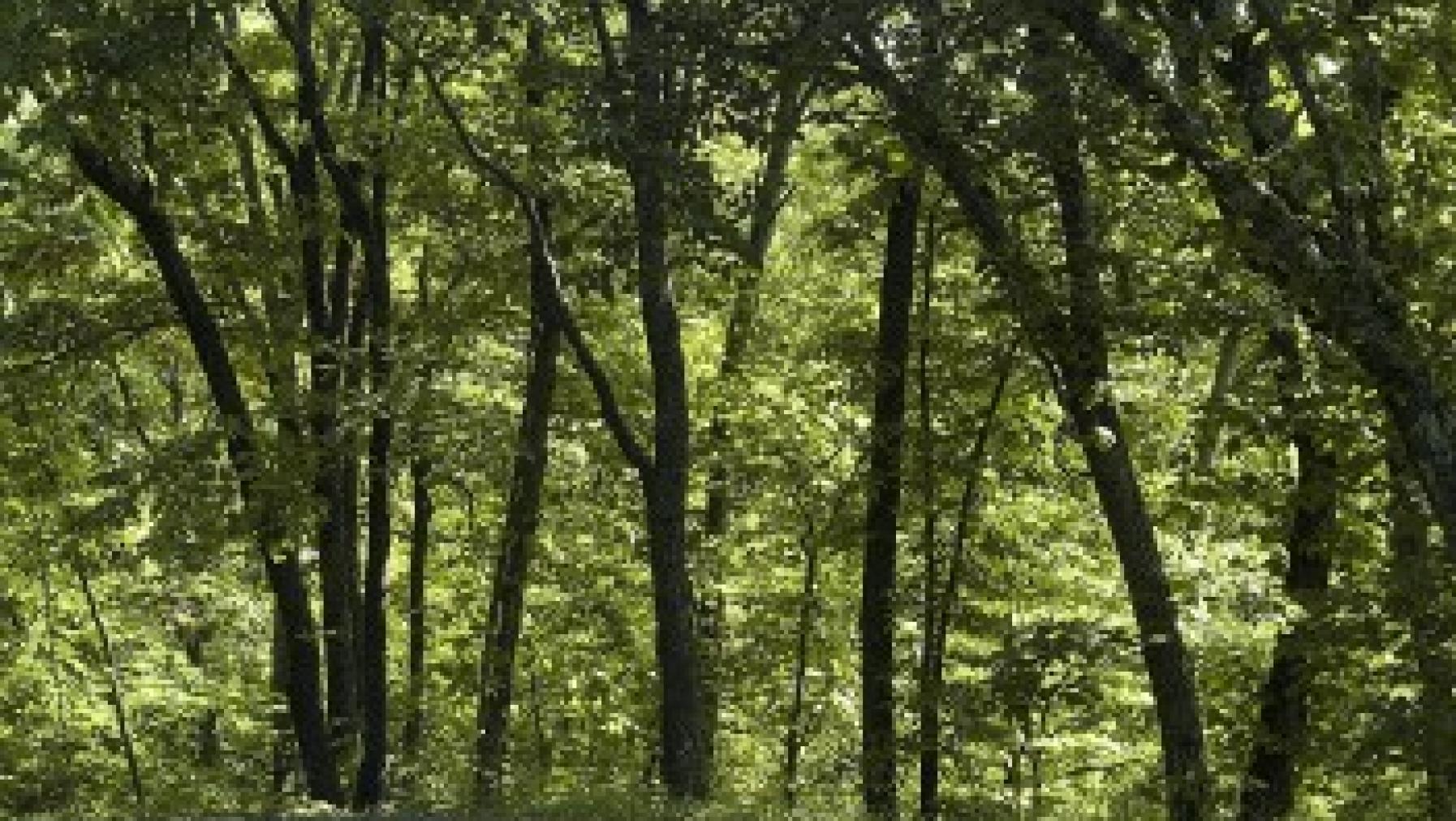Climate
Temperate broadleaf forests occur in areas of warm summers and cold winters, with precipitation often spread throughout the year but more seasonal in some areas. Snow is common in the northern part of the zone but decreases greatly to the south.
Soils
The heavy tree cover and warm, wet summers allows a maximal buildup of organic materials that form a well-developed humus layer, generally in loamy soils. The surface soil is dark brown and slightly acid, with more reddish layers below from the buildup of iron oxides. This is a rich, fertile soil.
Vegetation
These forests are composed primarily of deciduous trees, which shed their leaves each fall and grow a new complement each spring; seasonal changes in aspect are therefore quite marked. With a decrease in latitude in this forest zone, more and more evergreen broadleaf tree species appear. The forests are multilayered, with 1-2 tree layers, a shrub layer, and an herb layer. Usually there is a pulse of growth and flowering of the herbaceous species during spring. Conifers, particularly pines, occur in many special edaphic situations, for example where fires are frequent or on poor soils. Some trees characteristically produce large numbers of seeds ("mast") in certain years and few in others. Lianas are more common than in other temperate-zone forests, perhaps able to compete for light when trees have lost their leaves. Epiphytes are lacking, perhaps because of the very exposed conditions during the low temperatures of winter.
Diversity
These forests are complex structurally; some of them support a great diversity of plant species, which in turn provide both food and space resources for a great diversity of animals. Each major forest type supports its own assemblage of plant and animal species, and conifer stands in particular provide otherwise broadleaf forests with a quite different physiognomy, thus with distinct floras and faunas to augment diversity on a local basis. This zone features the highest diversity of some groups, especially insects, outside of tropics. North American and eastern Asian plant diversity are very high because they moved into tropical refugia during glaciations, but quite low in Europe because the Mediterranean blocked the retreat of the plants before the glaciers.
Many major tree groups occur in this zone, with important tree families including the Pinaceae, Fagaceae, Juglandaceae, Aceraceae, Salicaceae, and Betulaceae. Dominant shrub families include Rosaceae and Ericaceae, dominant herb families Caryophyllaceae, Ranunculaceae, Brassicaceae, Apiaceae, Lamiaceae, and Asteraceae. Environments of the zone are varied enough so that no constellation of characteristics has led particular animal groups to dominate it, but there is a high diversity of some groups, including salamanders (some families endemic to this zone) and turtles (as with plants, these ectothermal animals doubtless survived better in the more stable environment of southeastern North America during repeated glaciations). Migratory passerine birds, shrews, small rodents, and deer are also well represented in this zone.
Plant Adaptations
The broad, thin leaves of angiosperm trees grow rapidly, intercept photons efficiently, and provide effective photosynthetic organs during the warm, wet summers of this zone. However, they would be detrimental during the tree's winter dormancy, allowing water loss and possibly tissue damage from cold while not functioning photosynthetically. Thus the tree sheds them at that time. The quick growth and flowering of many forest herbs takes advantage of the brief spring period of warmth and the abundant sunlight before the trees leaf out, especially important to insect pollinators. The production of great quantities of seeds simultaneously probably allows many to escape potential seed predators.
Animal Adaptations
There are many types of seasonal adaptations in the fauna as well as in the flora. A large proportion of the birds and many bats migrate south in winter, while the remainder of the bats and some other mammals hibernate during this period of greatly reduced food supply and adverse climatic conditions. Food storage is feasible because of the ease of storing substances at low temperatures, and this adaptation is important to some jays and squirrels that specialize on mast-producing trees such as oaks and beeches. Cicadas, with amazingly synchronized emergence cycles that allow them to saturate predator populations, are characteristic of this zone.
Human Effects
Human populations are quite high in this zone (which includes many of world's largest cities), fairly pleasant climatically and very productive of harvestable plant and animal life. Because the soil is excellent for agriculture, much of it has been cleared for a very long time all over the world for this purpose. In addition, hardwood trees are valuable for timber, so these forests were severely altered for thousands of years even before extensive farming. In some areas, they are now growing back in second-growth stands of many of the same tree species. Many fire-climax pine forests are succeeding into deciduous forests where protected from fires by humans. Pine forests are also much used for lumber, and there are many major reforestation efforts in this zone.
Many plants from this zone were domesticated for food (fruits, vegetables, herbs) in Europe and the Near East.



